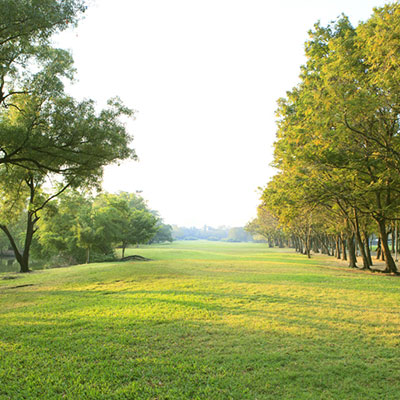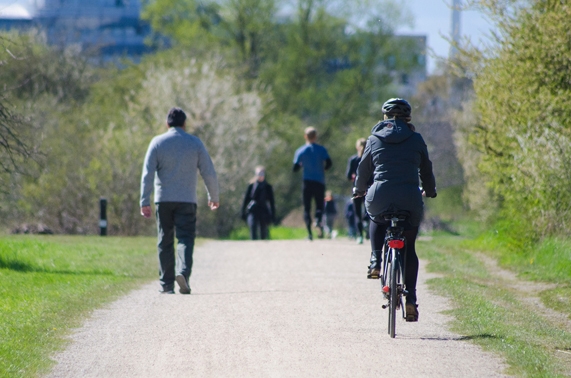
The Benefits of Urban Greenspace
In recent decades, the world has experienced an unprecedented rate of urban growth. In comparison to the relatively languid pace of expansion between the 17th and 18th century, where the percentage of the world’s population living in urban areas grew marginally from 3% to 14%, the last half a century has seen the urbanisation of the world’s population increase from 30% to an estimated 54.5% in 2016.
With an estimated forward projection of 60% of people to be housed within urban settlements globally by 2030, and with 1 in 3 people living within cities of more than 3 million people, considering how we can maintain healthy and sustainable urban environments is of the utmost importance.
As cities and urban structures expand further, the development of urban green spaces within them should be viewed in high priority, as pockets of woodland, parks and even gardens hold significant benefits to human urban populations and act as a habitat for potentially displaced wildlife. Through proven positive effects on mental and physical wellbeing, the presence of green spaces can alleviate some of the more problematic symptoms of living within a city.
Green spaces impact both our individual health and the environmental microcosm of the city by improving air quality, reducing the impact of harsher weather such as flooding or heatwaves, and mitigating the effects of global warming.
Health & Wellbeing
Depressive disorders are now the most prevalent cause of disability in middle and high-income countries, tied in with the rise of chronic physical health problems. Access to green spaces has a demonstrable improvement on our stress and blood pressure levels, improving mental wellbeing and reducing susceptibility to anxiety and mental health problems.
Approximately 1 in every 15 deaths in Europe is associated with a lack of physical activity, and in the UK specifically, only one-third of the population actually achieve the weekly recommended level of exercise. With an estimated direct economic cost reaching the billion pound mark annually, green spaces offer a welcome relief and environment for people to exercise within. Without a designated price of admission, green spaces work to equalise socioeconomic health inequalities and can cultivate a higher quality of life for those who are otherwise indisposed to get or work within a gym, like elderly people.

Temperature & Climate Change
Across the UK, there is a marked difference in the temperatures between urban and rural areas, usually of around 1-2 Celsius. Which although may seem minimal, can be exacerbated to potentially deadly levels during heat waves, a weather product which cities are already more vulnerable to. In the London heatwave of 2003, there was an increase in mortality of an estimated 42%.
This warming effect, or urban heat island, is due to the manufactured materials used to construct cities and towns absorbing more of the sun’s energy than the materials they replaced.
Urban green spaces diminish the effect of urban heat island as their canopies provide shade and cool the air through evapotranspiration. Evapotranspiration is the process where plants utilise the sun’s energy to transfer water from their leaves, into the atmosphere. Whereas urban areas tend to have a higher temperature on average, urban spaces with greenery are usually around 1 Celsius cooler, and this effect usually extends further beyond the green space itself and into the surrounding areas. As well as protection from weather extremes which could lead to health problems, it could reduce the need to expend energy on heat associated usage such as air con.
One of the primary benefits of designing urban green spaces is their effect on the amount of carbon released into the atmosphere. Whilst the type of trees used, and the maintenance of the spaces determine how much carbon the trees will sequester, any green space will have a definite effect on reducing the amount of carbon in the atmosphere. A space with a majority of trees and native vegetation will, however, take in more carbon than a space with a manicured lawn.
Air Quality
As well as minimising effect of urban heat island and containing carbon, the canopies of trees remove other harmful particles and gases from the air. Air pollution is a serious side effect of urbanisation. Forming from the emissions of vehicles and industry, particulate matter and gases like sulphur dioxide and nitrogen dioxide pollute the air and have a devastating effect on the air quality.
Poor air quality is a serious threat to human health, causing problems for the respiratory system and cardiovascular diseases. In many UK cities, including Leeds, average levels of NO2 in the air exceed the legally binding limits set by the European Union. Worldwide it is estimated that approximately 3.7 million deaths per year are caused by exposure to poor ambient air quality. At the local scale, exposure to particulate air pollution is estimated to cause 350 premature deaths annually in Leeds, and 29,000 across the whole UK.
Trees and shrubs have a multitude of impacts on air quality. Particles stick to the surface of the leaves, and gases are taken up through pores on the leaf surface. Trees with complex, ridged or hairy leaves (such as pines) tend to capture more particles than trees with broader, smoother leaves.
However, plants also emit gases (volatile organic compounds; VOCs) into the atmosphere that can result in the formation of O3 and PM under certain conditions. In places, trees may exacerbate local pollution by reducing the ventilation of air. The presence of large trees in narrow street canyons can obstruct wind flow and limit the ability of trees to remove pollutants. As a result, planting hedges or adding “green walls” in polluted street canyons may be more beneficial.
Current understanding suggests that the presence of urban vegetation results in an overall reduction in air pollution. For example, schools surrounded by green space have been shown to experience lower levels of traffic-related pollution in their classrooms.
